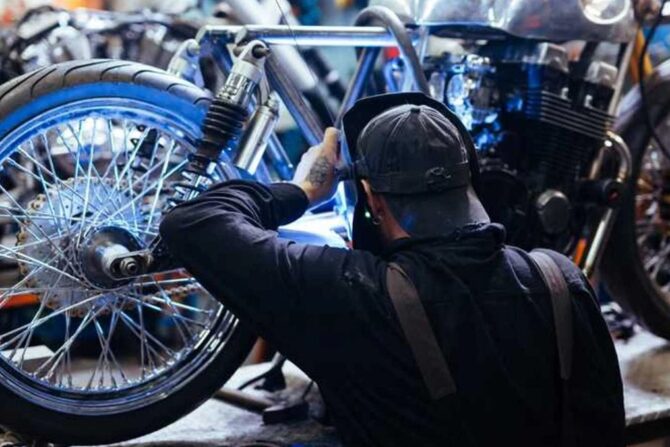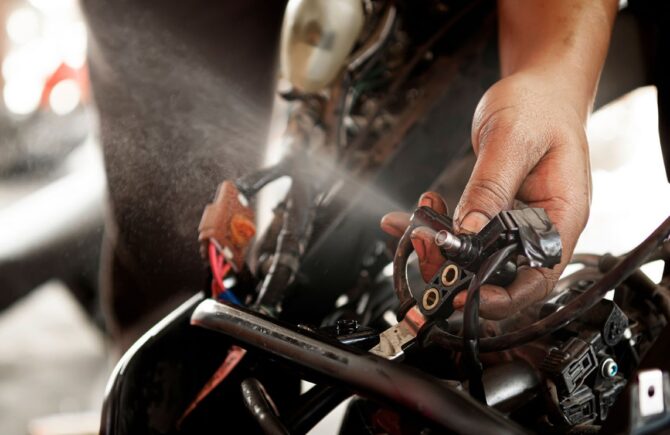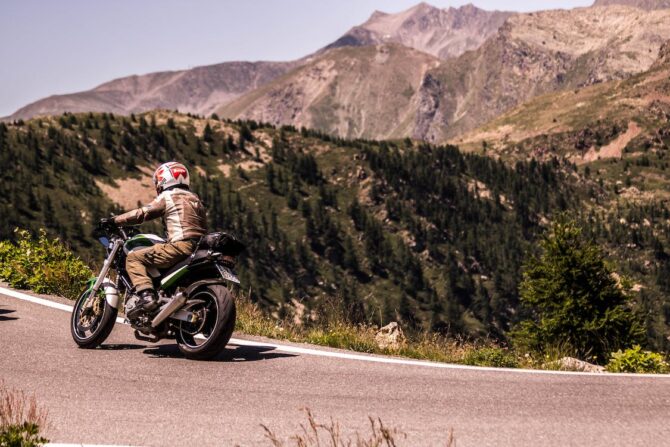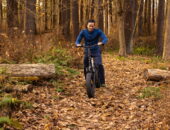
Embarking on a motorcycle journey is not just about the thrill of the ride; it’s about the synergy between the rider and the machine. Every motorcycle enthusiast understands the importance of a pre-ride check to ensure safety and optimal performance.
This ritual not only enhances your riding experience but also prolongs the life of your beloved bike. In this comprehensive guide, you’ll be able to walk through a detailed pre-ride checklist that every motorcyclist, whether a seasoned rider or a beginner, should follow.
1. Tires and Wheels
Start your pre-ride inspection with the tires of your motorcycle. Check for any signs of wear, such as cracks, bulges, or embedded objects that could be hazardous on the road. Ensure the tread depth is within legal limits and inspect the sidewalls for any damage.
Tire pressure is crucial; incorrect pressure can lead to poor handling and increased wear. Also, inspect the wheels for any cracks or bends and make sure the spokes are tight and intact.
2. Controls

Source: m.youtube.com
Controls act as your immediate connection to the motorcycle. Ensure that the throttle moves without resistance and promptly returns to its initial position upon release to avoid dangers when on the road. Examine the clutch and brake levers to guarantee they operate smoothly and are correctly adjusted.
The cables need to be intact, devoid of any kinks or fraying, and the handlebars should rotate effortlessly from one extreme to the other without obstruction. Additionally, it’s important to regularly lubricate these components to maintain their functionality and extend their lifespan.
3. Lights and Electrics
Conduct a thorough check of all the lights, including the headlights, brake lights, turn indicators, and tail lights, to confirm they are operational, clean, and correctly aligned to ensure that they are all working properly.
Scrutinize the battery terminals for any signs of corrosion and make sure the battery itself is firmly in place.
Additionally, verify that the horn and instrument panel are in good working order. It’s also beneficial to regularly clean the lights to maintain visibility and safety, especially in adverse weather conditions or during night rides when they will be needed the most.
4. Oil and Fluid Levels
Ensuring that fluid levels are kept at their optimal range is essential for the efficient operation of your motorcycle. Regularly monitor the levels of oil, brake fluid, coolant (where applicable), and hydraulic clutch fluid (if your bike has one).
Be vigilant for any indications of leaks or drips beneath the motorcycle. Additionally, consider the age and condition of these fluids, as they may require replacement over time to maintain the bike’s performance and safety.
5. Chassis

Source: freepik.com
Inspect the frame meticulously for any signs of cracks or damage. Evaluate the suspension to ensure it operates smoothly and make adjustments to suit your personal riding preferences and style. For the drive system, whether it’s a chain or belt, verify that it has the correct tension and is well-lubricated.
In the case of a chain, it’s crucial to keep it not only well-oiled but also free of dirt and debris for optimal performance and longevity. Additionally, regular maintenance of these components can significantly enhance the motorcycle’s overall handling and safety.
6. Bike Backpack and Storage
When using a bike backpack or any onboard storage compartments, confirm that they are fastened securely and do not hinder your riding ability. This is for your safety and other people on the road. The backpack should be comfortable and lightweight, ensuring it does not restrict your mobility or block your view of the motorcycle’s instruments.
Additionally, regularly check during the ride that the load hasn’t shifted, which could affect the bike’s balance and handling.
7. Brakes
Examine the front and rear brakes to verify their proper operation. Confirm that the brake pads have ample material remaining for safe usage. Press the brake lever and pedal to detect any sponginess or slack, symptoms that could suggest air in the hydraulic lines.
It’s essential to listen for any unusual grinding or squealing noises during braking, as these can be indicators of worn pads or rotors. Additionally, check the brake fluid level and its color; murky or old fluid may need to be replaced to ensure optimal braking performance for various safety uses.
8. Fuel

Source: freepik.com
Make sure your fuel level is sufficient for the entire journey. Beginning your trip with a full tank is advisable to prevent unexpected fuel shortages. Additionally, thoroughly inspect the fuel lines and tank for potential leaks.
It’s also wise to familiarize yourself with the locations of fuel stations along your route, especially if you’re embarking on a long journey or traveling through remote areas. Regular checks for fuel quality and contamination can also be beneficial for maintaining engine health.
9. Stand
Examine both the side stand and center stand closely. They need to retract seamlessly and remain securely positioned when deployed. Check the springs for any signs of wear or damage, ensuring they’re functioning correctly.
Additionally, confirm that the stand does not make any contact with the ground or interfere with the bike’s moving parts during a ride. It’s also crucial to listen for any unusual noises when deploying or retracting the stands, as this could indicate a need for maintenance or adjustment.
Insights and Takeaways

Source: pexels.com
Performing a pre-ride check is a fundamental aspect of motorcycle riding that ensures your safety and the bike’s longevity. This checklist serves as a comprehensive guide but always refer to your motorcycle’s specific manual for any additional checks or procedures.
Remember, a well-maintained motorcycle not only offers a more enjoyable ride but also keeps you safer on the road. So, before you rev up your engine and hit the road, take a few minutes to run through this checklist. It’s a small investment of time that could save much more than just your ride. Safe travels!



